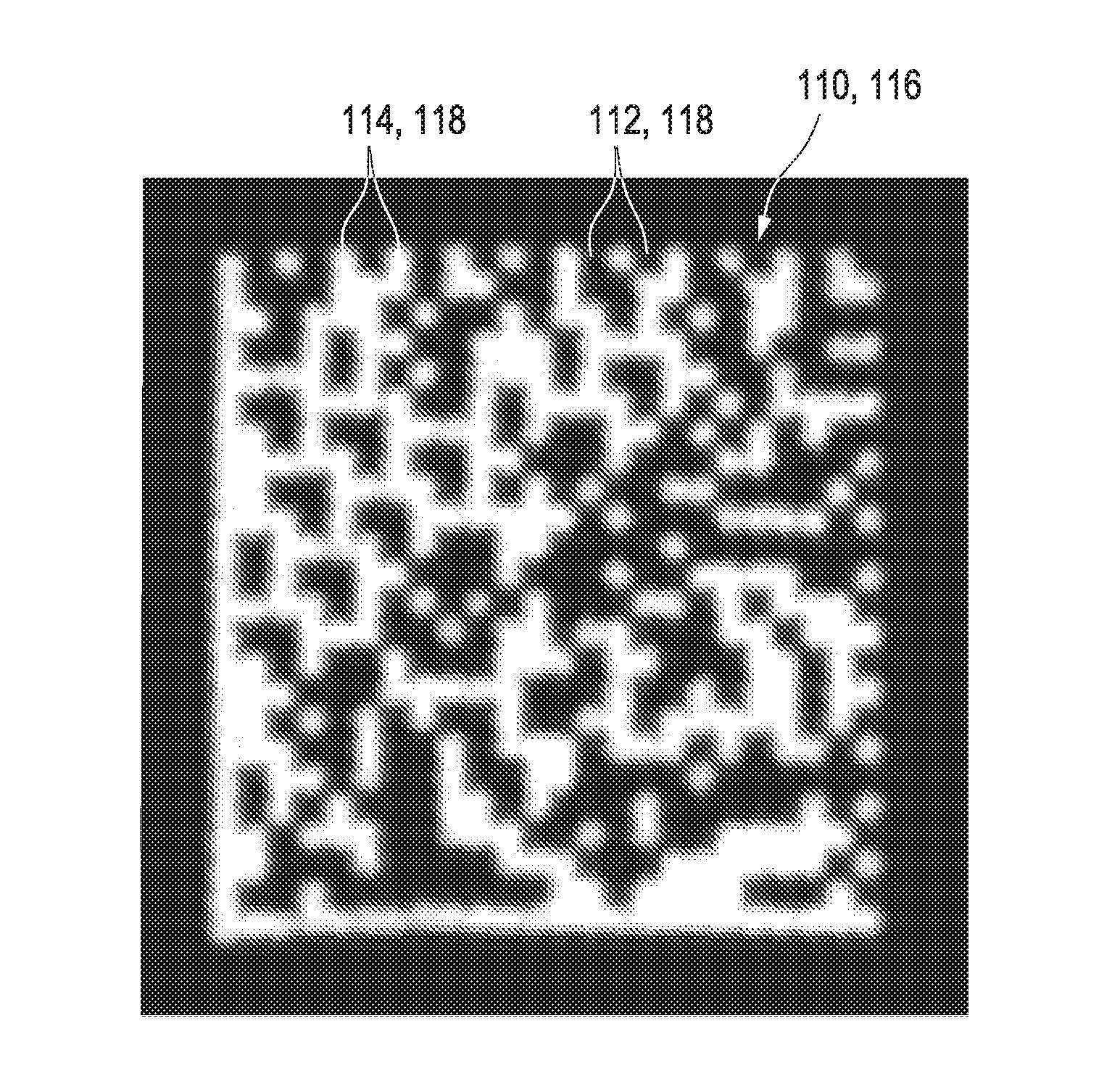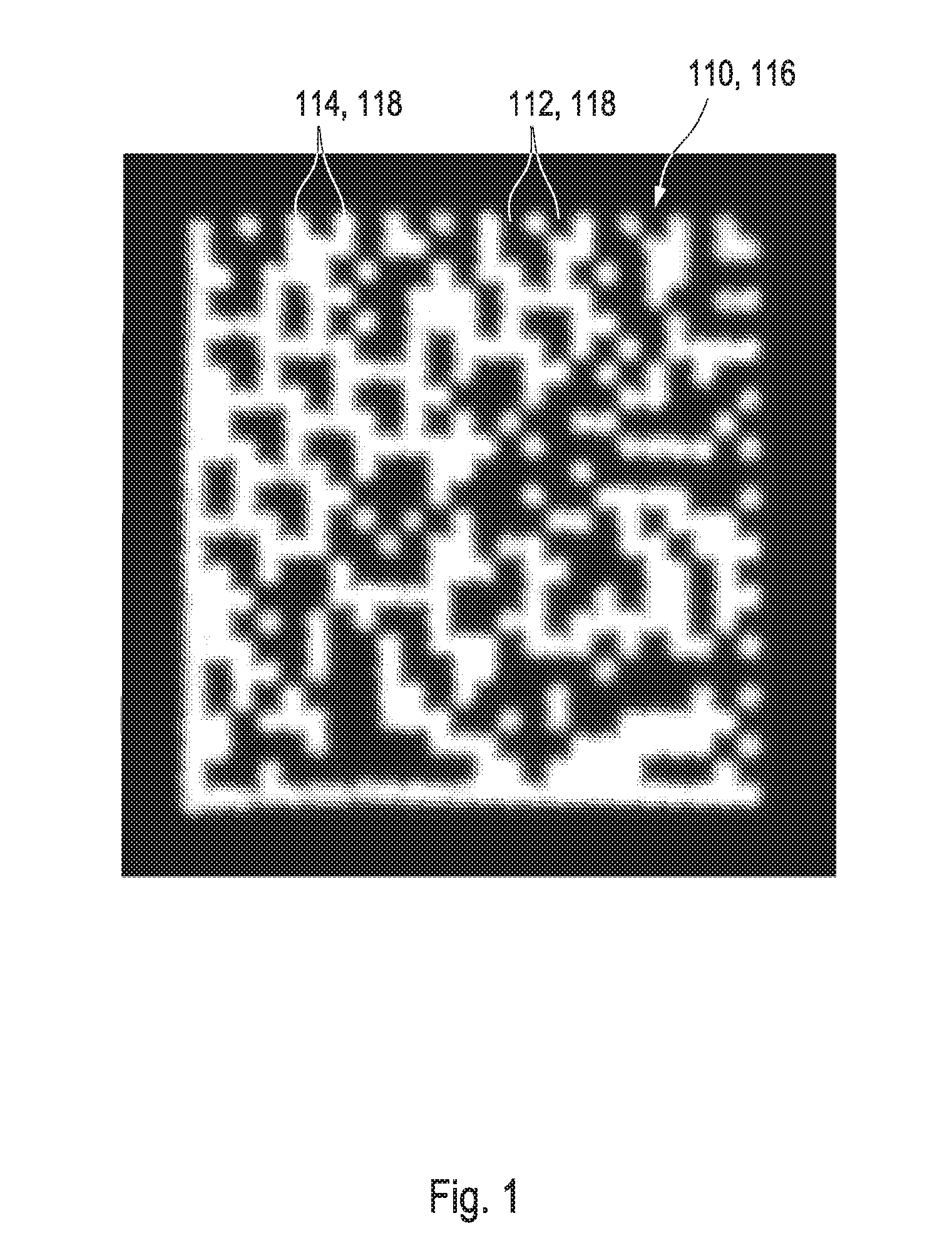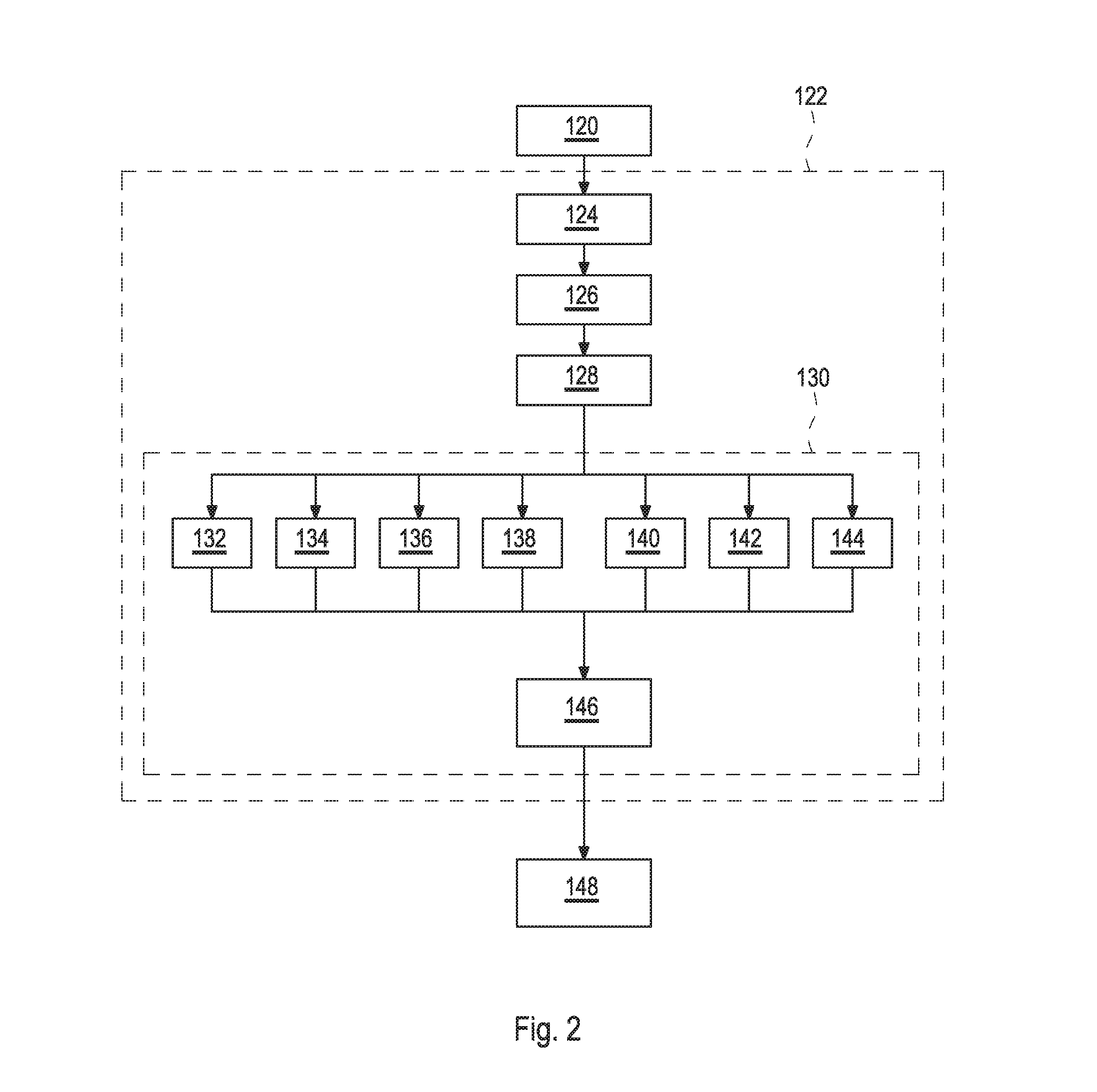Method and apparatus for proving an authentication of an original item and method and apparatus for determining an authentication status of a suspect item
a technology for authenticating original items and suspect items, applied in the direction of instruments, electric digital data processing, sensing record carriers, etc., can solve the problems of large databases, impede the industrial implementation of authenticating documents, and complicate the generation of authenticating documents
- Summary
- Abstract
- Description
- Claims
- Application Information
AI Technical Summary
Benefits of technology
Problems solved by technology
Method used
Image
Examples
second embodiment
[0286]According to FIG. 15B, within the second preferred embodiment for determining the authentication status of 172 the suspect item only the recording step 124, the modifying step 126, and the decoding step 128, may be performed locally until the modified picture 110 of the printed version of the code is transmitted within the transmission step 166 to the data processing unit via the computer network, where the remaining steps, including the analyzing step 130, the calculating step 132, the selecting step 168, the comparing step 170, and the returning step 174 may be performed. By this procedure, the second embodiment may provide the authentication status 172 of the suspect item.
[0287]Summarizing as described in FIG. 15B, the second preferred embodiment for the method for determining the authentication status 172 of the suspect item 180 may comprise the following steps:[0288]124 Recording step: recording the picture 110 of the printed version of the data matrix barcode printed ont...
third embodiment
[0297]Finally, a third embodiment as schematically depicted in FIG. 15C may also provide the authentication status 172 of the suspect item. In this particular embodiment, only the recording step 124 may locally be performed before the picture 110 of the printed version of the code may be transmitted, with the transmission step 166, to the data processing unit via the computer network, whereas the remaining steps, including the modifying step 126, the decoding step 128, the analyzing step 130, the calculating step 132, the selecting step 168, the comparing step 170, and the returning step 174 may be performed.
[0298]Summarizing as described in FIG. 15C, the third preferred embodiment for the method for determining the authentication status 172 of the suspect item 180 may comprise the following steps:[0299]124 Recording step: recording the picture 110 of the printed version of the data matrix barcode printed onto the item by means of an optical system;[0300]166 Transmission step: trans...
first embodiment
[0309]FIG. 16 schematically depicts a preferred authentication apparatus 176 which is configured for performing the method for determining the authentication status 172 as schematically presented in FIG. 15A. Here, a recording device 178 may, according to part A), be configured for recording the picture 110 of the printed version of a data matrix barcode which may have been printed onto an item 180, such as a bottle which might comprise a pharmaceutical preparation. Hereby, the recording of the picture 110 may be supported by a light source 182 which may illuminate the picture.
[0310]The authentication apparatus 176 may, according to part B), further comprise a decoding device 184 which may be configured for decoding the at least one barcode content from the picture 110 of the printed version of the code according to the set of rules applicable to the data matrix barcode. A further part of the authentication apparatus 176 may, according to part C), be the analyzing device 186 config...
PUM
 Login to View More
Login to View More Abstract
Description
Claims
Application Information
 Login to View More
Login to View More - R&D
- Intellectual Property
- Life Sciences
- Materials
- Tech Scout
- Unparalleled Data Quality
- Higher Quality Content
- 60% Fewer Hallucinations
Browse by: Latest US Patents, China's latest patents, Technical Efficacy Thesaurus, Application Domain, Technology Topic, Popular Technical Reports.
© 2025 PatSnap. All rights reserved.Legal|Privacy policy|Modern Slavery Act Transparency Statement|Sitemap|About US| Contact US: help@patsnap.com



